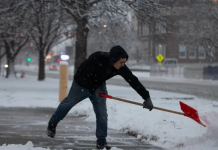K-State Research and Extension
County fairs may look different, but the learning continues
MANHATTAN, Kan. – In an odd year for just about everything, Kansas 4-H members are tweaking their projects with an eye toward showing their peers and community members what they’ve been learning.
The county fair will go on…in one way or another.
“The county fair is an opportunity for youth to showcase what they have learned throughout the 4-H year,” said Beth Hinshaw, a 4-H youth development specialist in the southeast region.
She notes that Kansas 4-H members participate in more than 30 project areas each year, all providing an opportunity to explore an area of interest. Despite the COVID-19 pandemic, those projects have not stopped; youth continue to feed and care for livestock, and continue to pursue their interest in such areas as photography, foods and nutrition, clothing, fiber arts, rocketry and more.
“In some cases, young people had more time to work on their projects this year,” Hinshaw said. “And they’ve still had caring mentors, project and club leaders who are urging them forward and challenging them to learn new things.”
But the method by which they’ll be able to show the fruits of their labor is mixed across Kansas. With county fair season underway, local boards have opted for varying degrees of in-person and online fairs.
“This year is different,” Hinshaw said. “I think it’s really important that if you are typically a fair-goer that you check in about your county fair: Are they having the same hours this year? Are they having the same exhibits this year? Are they open to the public and when are they open? Or can you catch a show or a recap online?”
Hinshaw notes that most Kansas counties are posting about their local fairs on Facebook, Twitter or other social media. She encourages residents to follow social media accounts from their local office to stay updated on the county fair.
“One other thing I would suggest is to follow up with the 4-Hers you know,” she said. “If you have grandchildren or you have neighbors who are in the 4-H program, follow up with them: How is their project work going, or what have they learned this year?
“We may not be able to see those exhibits or those kiddos performing in person this year, but go ahead and follow up with them with your interest in their exhibit and in their growth and development.”
As they grow in 4-H, members often start with projects at a “beginning level,” Hinshaw said, and gradually build their knowledge base over years. Each year’s fair is an opportunity to showcase how they’ve grown. “What we know is that while that is happening, young people also are building their abilities as learners, communicators, collaborators and contributors,” she said.
Updates on 4-H activities are available on the Kansas 4-H Youth Development web page, as well as on Facebook and Twitter.
FOR MORE INFORMATION: Links used in this article
Kansas 4-H Youth Development, www.kansas4-h.org
Kansas 4-H projects, www.kansas4-h.org/projects
Kansas 4-H on Facebook, https://www.facebook.com/Kansas4H
Kansas 4-H on Twitter, https://twitter.com/kansas4h
K‑State Research and Extension is a short name for the Kansas State University Agricultural Experiment Station and Cooperative Extension Service, a program designed to generate and distribute useful knowledge for the well‑being of Kansans. Supported by county, state, federal and private funds, the program has county extension offices, experiment fields, area extension offices and regional research centers statewide. Its headquarters is on the K‑State campus in Manhattan. For more information, visit www.ksre.ksu.edu
Released: July 14, 2020
Story by:
Pat Melgares
785-532-1160
For more information:
Beth Hinshaw
620-669-3888




